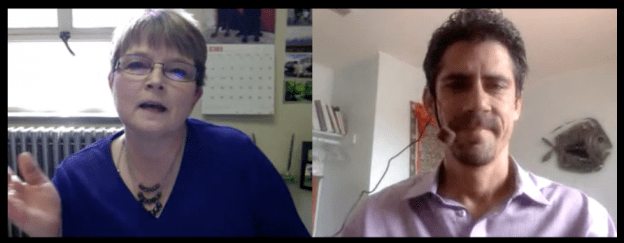 This morning I was interviewed by Dr. Debra Beck about my dissertation research on shared leadership and strategic decision making in nonprofit boards of directors. It was a fun experience that reinforced to me how relevant this topic is to leaders who are trying to figure out how to make the best use of their board members’ expertise, insights, and relationships. I also saw a lot of connections to the sorts of questions Debra has been playing with for years on her blog The Laramie Board Learning Project regarding group learning, generative thinking, and how to make board service more meaningful and impactful.
This morning I was interviewed by Dr. Debra Beck about my dissertation research on shared leadership and strategic decision making in nonprofit boards of directors. It was a fun experience that reinforced to me how relevant this topic is to leaders who are trying to figure out how to make the best use of their board members’ expertise, insights, and relationships. I also saw a lot of connections to the sorts of questions Debra has been playing with for years on her blog The Laramie Board Learning Project regarding group learning, generative thinking, and how to make board service more meaningful and impactful.
The problem in a nutshell: Organizations and their boards often face major policy and strategy decisions that impact the future of an organization, yet they often find it hard to get everyone on the same page — or even aware of what pages. Why is that?
The sort of strategic decision I’m looking at include any number of choices that are of major importance to the organization; are difficult, costly, or impossible to reverse once made; and are made in an environment of complexity, ambiguity, and information scarcity. Just a few examples include:
- Should we expand to new program sites or consolidate programs in the name of efficiency?
- How do we balance demands of funders versus beneficiaries when what is fundable doesn’t match what we know our clients really need?
- When our ED leaves, how do we decide who to hire? What is our vision for the organization and what does the leader look like who will carry the organization there?
In situations like these, it can often be tough to figure out exactly what the question is, let alone find the “right” answer when all of the possible choices really come down to a judgment call among competing values and priorities. We recruit talented leaders to our board because they bring unique wisdom, experience, skills, connections, information, and passion to the table. But when those leaders disagree about which value or priority is most important, how can chairs and executive directors integrate those differences in thinking to use them to produce the best possible decision rather than a zero-sum battle in which one point of view (and its proponents) prevail over the other?
In wrestling with these questions, I believe boards can learn a lot from the latest research on shared leadership and integrative capacity in teams. You can learn more about the connections I’m making by watching the video of our conversation.
As a background companion to this discussion, if you’d like to learn more about shared leadership you can also refer to the handout from my presentation at the Alliance for Nonprofit Management conference earlier this month:
Learn more about our leadership development and leadership training programs for more details on shared leadership!